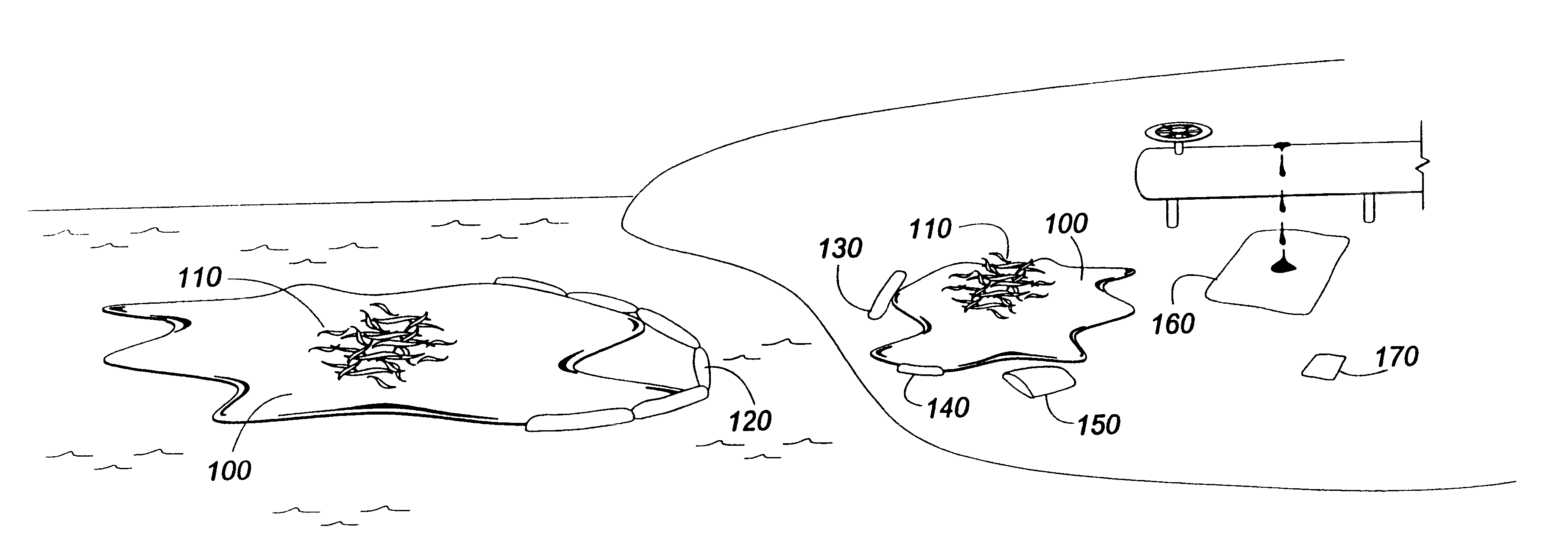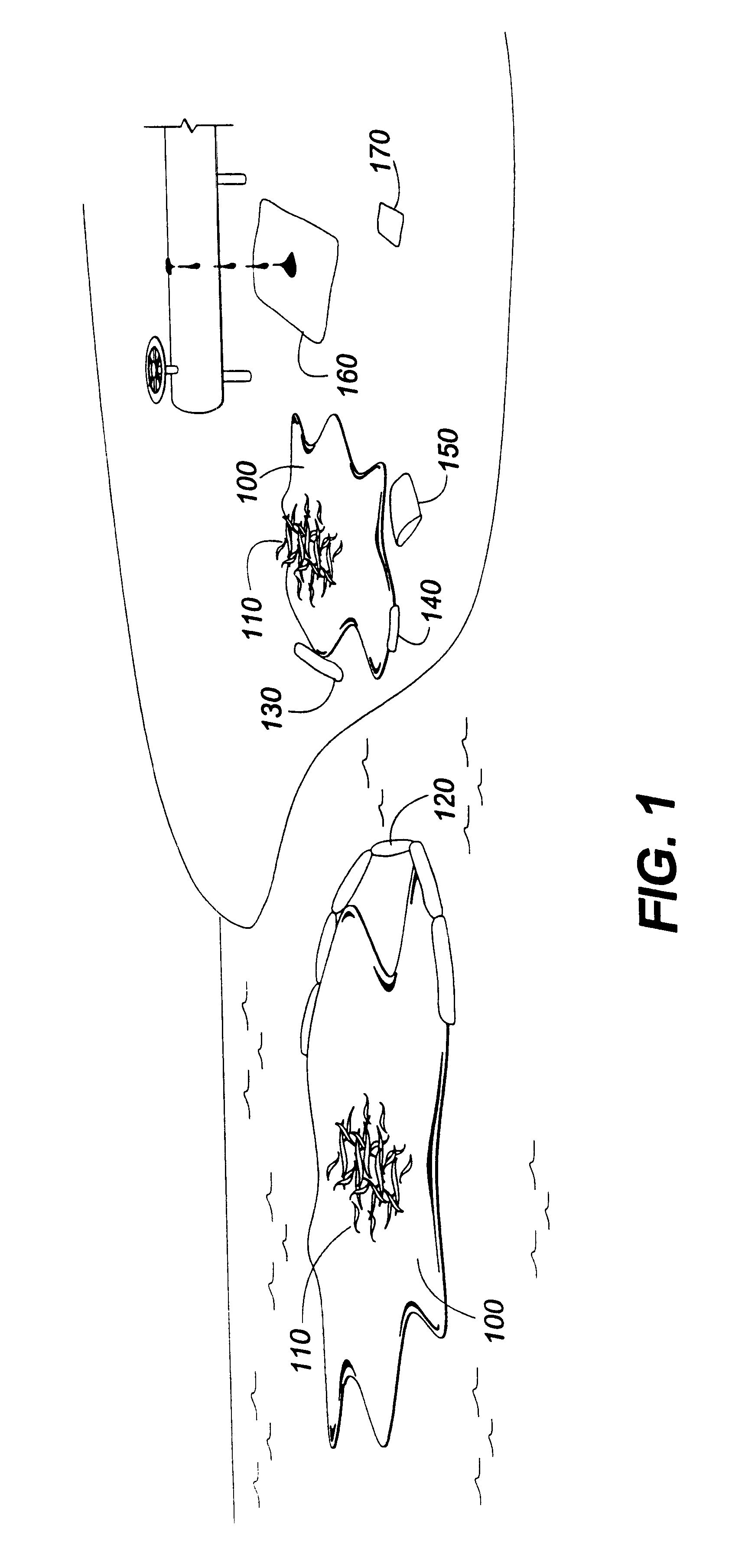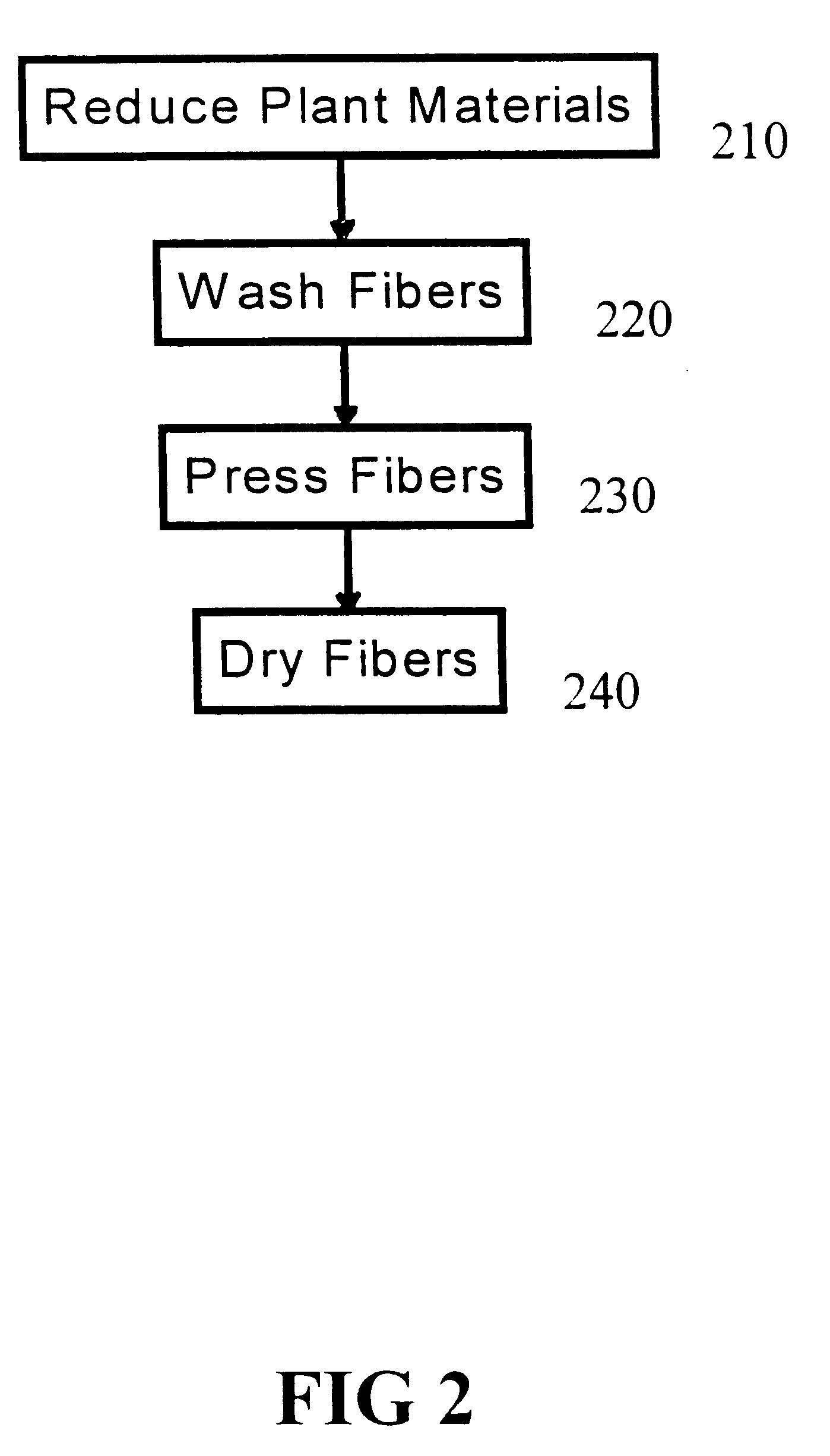Process for sorbing liquids using tropical fibers
a technology of sorbing liquid and tropical fibers, which is applied in the direction of water/sewage treatment by ion exchange, other chemical processes, separation processes, etc., can solve the problems of increasing environmental problems, affecting the health of wildlife and humans, and spilling of oil, solvents and hazardous materials
- Summary
- Abstract
- Description
- Claims
- Application Information
AI Technical Summary
Benefits of technology
Problems solved by technology
Method used
Image
Examples
Embodiment Construction
In the preferred embodiment, naturally hydrophobic sorbent fibers 110 from tropical plants are processed to remove a substantial portion of their naturally occurring liquids and dried for use as an oil sorbent. These sorbent fibers 110 may be from any of a variety of tropical agricultural by-products including, but not limited to, banana stalks, plantain stalks, cavendish plant stalks, pineapple crowns, palm fronds and pinzote, palmetto fronds and coconut fronds.
The fibers used in the preferred embodiment of present invention are naturally "hydrophobic", meaning that they have an affinity for nonpolar compounds such as oils and hydrocarbons, and thus are capable of binding significant quantities of these compounds. The fibers are also generally permeated with a large number of capillaries which increase their effective surface area, further increasing their binding capacity. However, in the raw state, the fibers also have a content of approximately 80% by weight of natural liquids s...
PUM
| Property | Measurement | Unit |
|---|---|---|
| hydrophobic | aaaaa | aaaaa |
| hydrophobic absorptivity | aaaaa | aaaaa |
| density | aaaaa | aaaaa |
Abstract
Description
Claims
Application Information
 Login to View More
Login to View More - R&D
- Intellectual Property
- Life Sciences
- Materials
- Tech Scout
- Unparalleled Data Quality
- Higher Quality Content
- 60% Fewer Hallucinations
Browse by: Latest US Patents, China's latest patents, Technical Efficacy Thesaurus, Application Domain, Technology Topic, Popular Technical Reports.
© 2025 PatSnap. All rights reserved.Legal|Privacy policy|Modern Slavery Act Transparency Statement|Sitemap|About US| Contact US: help@patsnap.com



